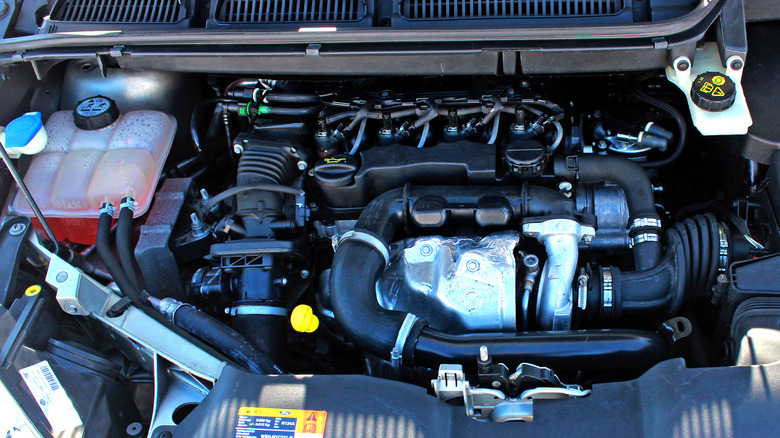A diesel tuner, also known as a performance chip or programmer, is an electronic device designed to enhance the performance, power, and fuel efficiency of your diesel-powered vehicle. Installing a diesel tuner can significantly improve your driving experience, and the good news is that you don’t need to be a professional mechanic to do it. In this article, common rail diesel repairs we will guide you through the steps to install a diesel tuner and help you unleash the full potential of your diesel engine.
- Gather the Necessary Tools and Supplies
Before you begin the installation process, make sure you have all the tools and supplies required for a successful installation. Here is a list of the essential items you’ll need:
- Diesel tuner (compatible with your vehicle)
- Screwdriver set
- Trim panel removal tool (if necessary)
- Cable ties or fasteners
- User manual or installation guide provided with the tuner
- Clean, lint-free cloth
- Access to a computer with internet access (for software updates, if required)
- Read the User Manual
Start by reading the user manual or installation guide provided with your diesel tuner. Understanding the instructions is crucial to ensure a smooth installation process. Pay special attention to any warnings, safety precautions, and specific requirements for your vehicle model.
- Prepare Your Vehicle
Before installing the diesel tuner, make sure your vehicle is in a safe and suitable location. Park your vehicle on a level surface, engage the parking brake, and disconnect the negative terminal of the vehicle’s battery to prevent any electrical issues during the installation.
- Locate the OBD-II Port
Most modern diesel vehicles are equipped with an OBD-II (On-Board Diagnostics) port, which is where the diesel tuner will be connected. The OBD-II port is usually located beneath the dashboard near the steering column. Consult your vehicle’s user manual to find the exact location of the port, as it can vary from one model to another.
- Connect the Diesel Tuner
Follow these steps to connect the diesel tuner to your vehicle:
- Connect the cable from the tuner to the OBD-II port. Ensure that the connectors are securely plugged in.
- Carefully route the cable to avoid interference with the steering column, pedals, and other moving parts. Use cable ties or fasteners to secure the cable neatly in place.
- If your tuner requires additional connections to the vehicle’s computer or sensors, follow the instructions provided in the user manual.
- Turn On the Ignition
With the tuner connected to the OBD-II port, turn the vehicle’s ignition key to the “On” or “Run” position. This will power up the tuner and allow it to communicate with your vehicle’s computer.
- Install Software Updates
Some diesel tuners may require software updates to ensure compatibility with your vehicle’s model and to provide the latest performance enhancements. You may need to connect the tuner to a computer with internet access and follow the manufacturer’s instructions to download and install the necessary updates.
- Follow the Tuner’s On-Screen Instructions
After the tuner is powered on and any required software updates are installed, follow the on-screen instructions provided by the tuner. These instructions will guide you through the tuning process, which may include selecting performance settings, adjusting parameters, and saving your custom configurations.
- Save Stock Settings
Before making any changes with the diesel tuner, it’s advisable to save your vehicle’s stock settings. Most tuners provide an option to back up your factory settings, allowing you to revert to the original configuration if needed. This is a critical step to ensure you can return your vehicle to its stock condition for maintenance or warranty purposes.
- Customize Performance Settings
Depending on your diesel tuner, you may have various performance settings to choose from. These settings can include options to increase power, torque, fuel efficiency, and more. Customize the tuner’s settings according to your preferences, keeping in mind the intended use of your vehicle, whether it’s for daily commuting, towing, or off-roading.
- Confirm and Save Tuning Parameters
Once you’ve customized the performance settings, confirm your choices, and save the tuning parameters. The tuner will then apply the selected settings to your vehicle’s engine control unit (ECU) or electronic control module (ECM).
- Wait for Completion
The tuner will complete the installation process and update your vehicle’s ECU or ECM. This may take a few minutes, so be patient and wait until the tuner notifies you that the process is finished.
- Disconnect the Tuner
Once the installation is complete, safely disconnect the tuner from the OBD-II port. Ensure that the cable is removed securely.
- Reconnect the Battery
Reconnect the negative terminal of the vehicle’s battery, which you disconnected at the beginning of the installation. This will restore power to your vehicle.
- Test Drive
To ensure that the tuning adjustments are working correctly and to experience the improvements in performance, take your diesel truck for a test drive. Pay attention to changes in power, torque, common rail diesel repairs and fuel efficiency. If you encounter any issues, return to the stock settings and consult the tuner’s user manual or customer support for assistance.
- Keep Records
Maintain a record of the tuning adjustments you’ve made, as well as the stock settings you’ve saved. This will be helpful for future reference and for warranty purposes, should the need arise.
In conclusion, installing a diesel tuner can be a straightforward process, provided you follow the manufacturer’s instructions and take the necessary precautions. With the right tools and a basic understanding of your vehicle, you can unlock the full potential of your diesel engine, achieving improved performance, fuel efficiency, and a more enjoyable driving experience. Always adhere to safety guidelines and keep the tuner’s user manual handy for reference.

